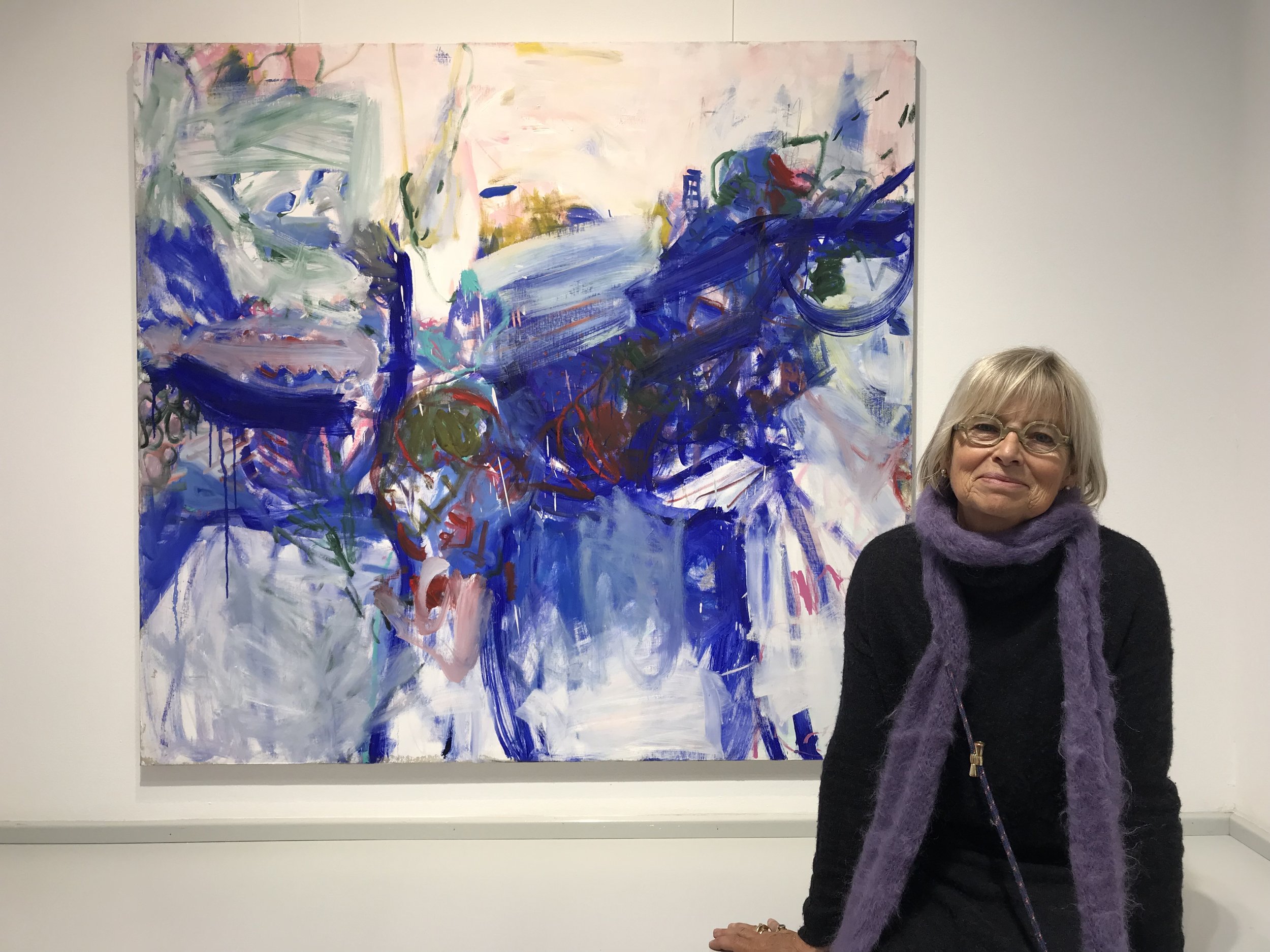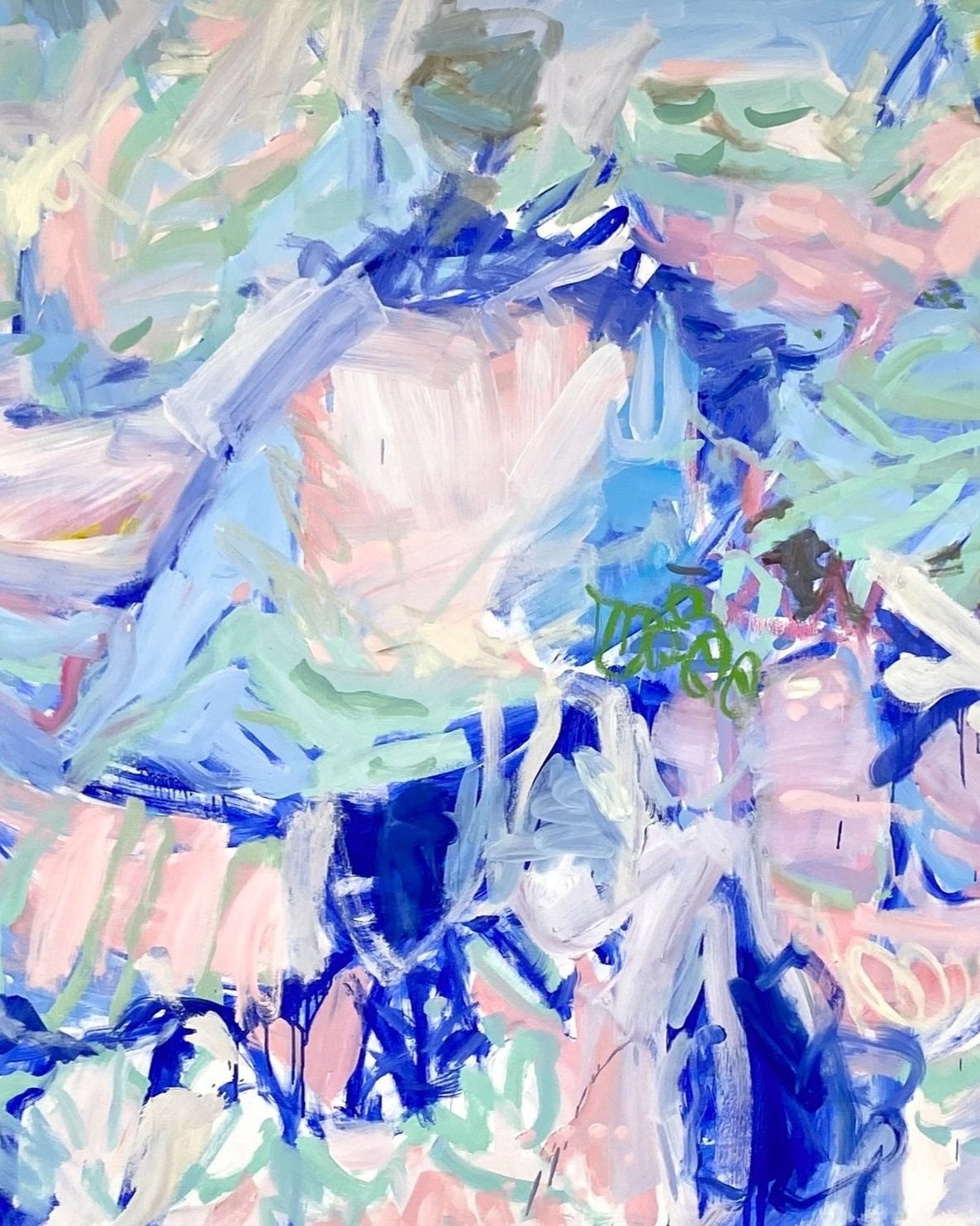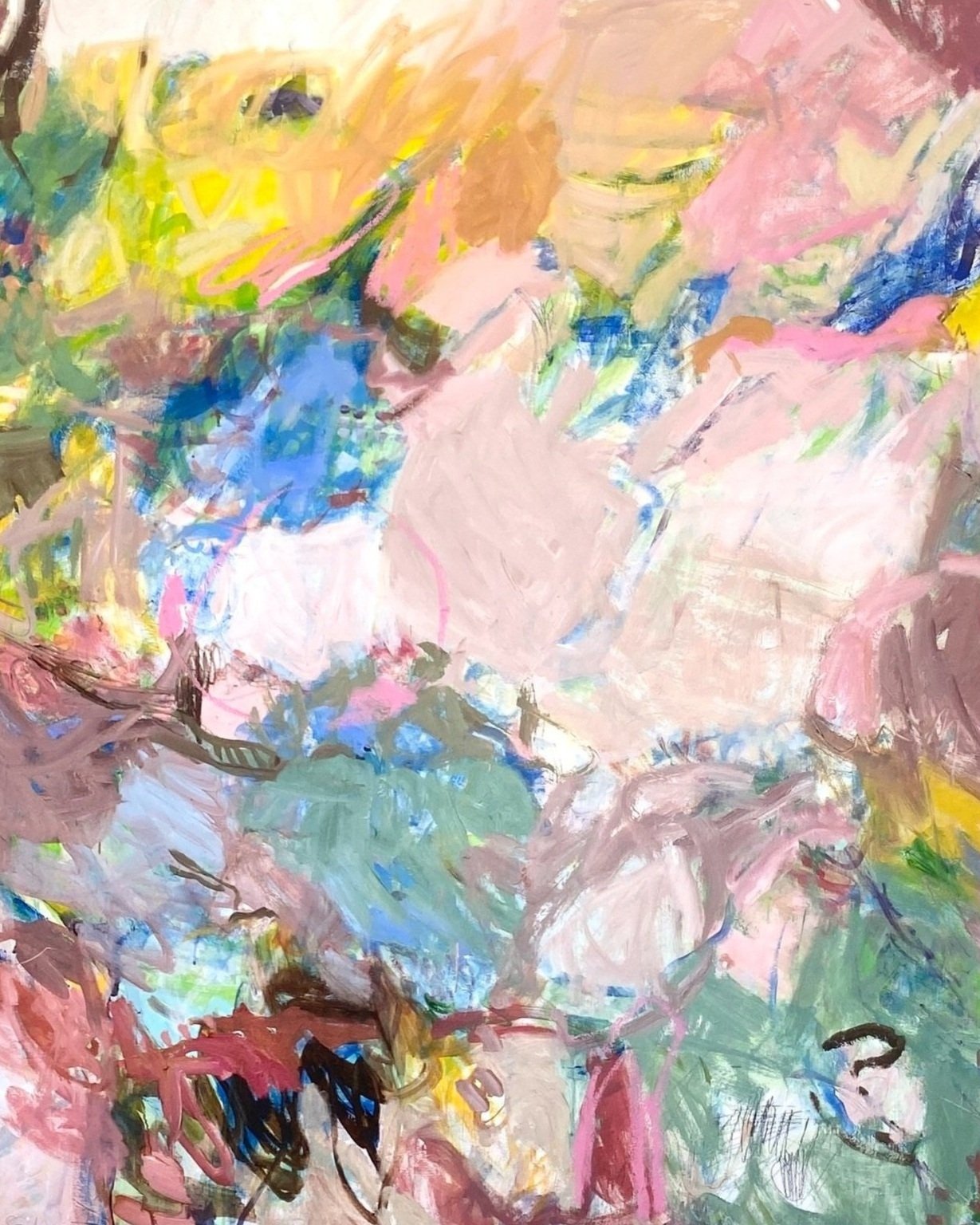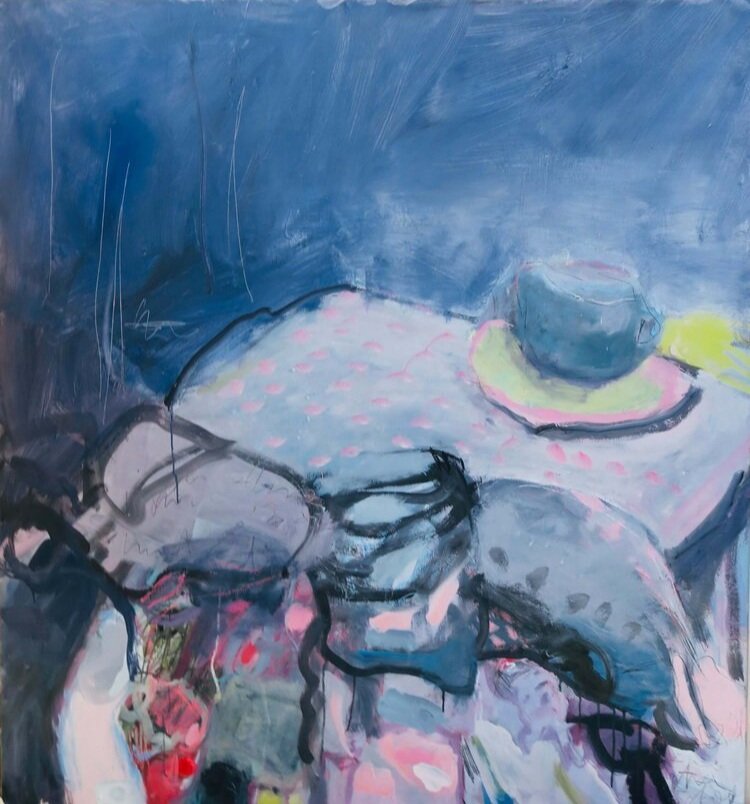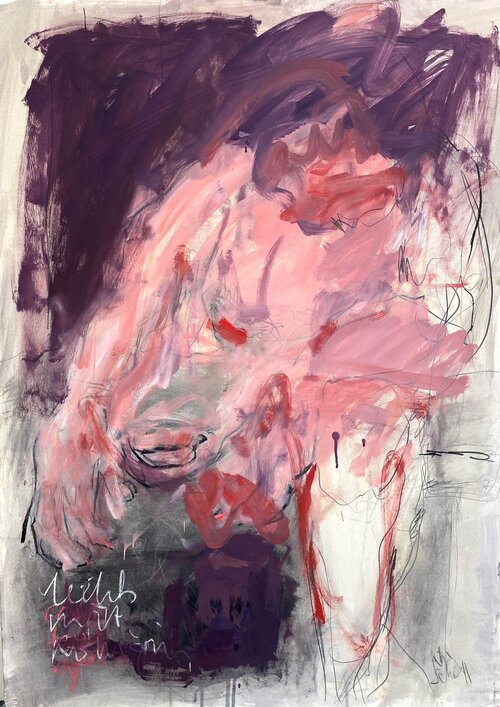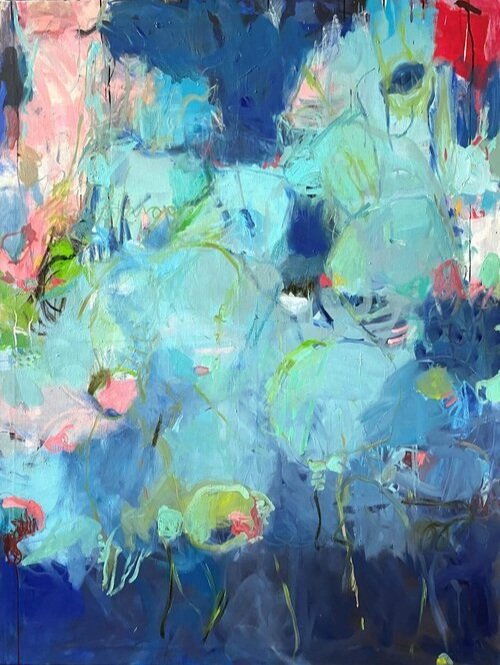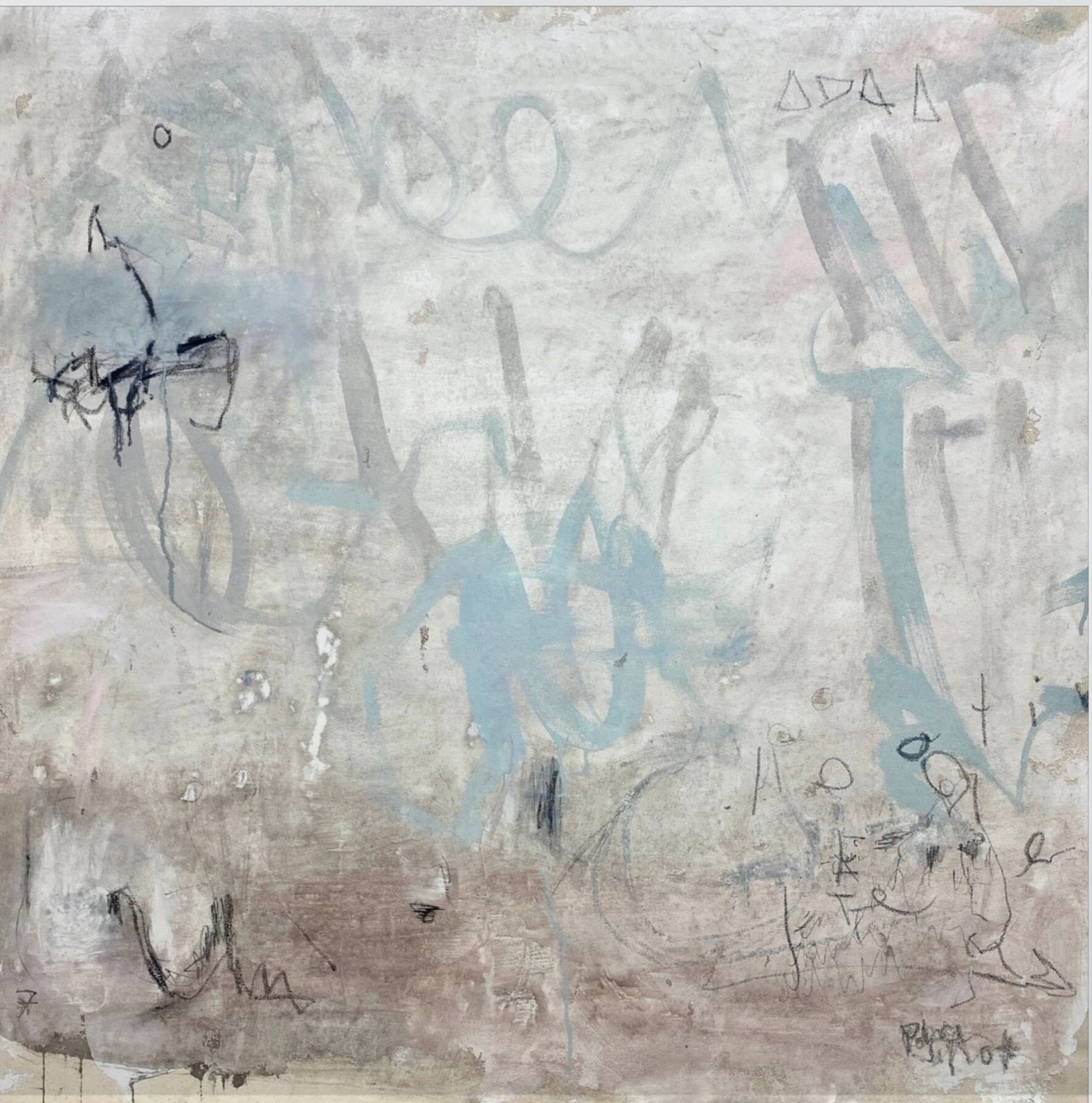Interview
Petra Schott
Petra Schott’s work revolves around visions, ideas, and emotions in the past and present as seen in a figurative-abstract way. She searches for freedom, lightness, liveliness, and intensity. Her studio is a space of experiment, pleasure, frustration, and new beginnings. She loves to listen to music to come to that moment where intuition and creative process can start to flow.
Petra was born in Hannover Germany in 1953. She studied Fine Arts in Kassel Germany and started taking part in exhibitions nationally and internationally from 1990 onwards. Currently, she is living in Frankfurt Germany. She is part of the national association of professional artists (BBK) and of the national association of professional female artists (GEDOK).
The beauty of paintings and the emotional reaction they can cause inspired her to become an artist. It inspires her to make an unseen world visible, to bring magic and hidden secrets into our world. It inspires her to make people question their view of the world and to give a voice to visual articulation not existent before. She is an artist at the borderline of figurative and abstract art, and this gives her the freedom to invent and put together recognizable and unrecognizable forms and shapes.
What is your background and how did you start your journey in the art world?
“I studied law in Göttingen and then Fine Arts in Kassel. I realized I love painting and being creative with colors, shapes and lines, letting myself drift deeply into the half-conscious worlds. Painting became more and more important in my life, so much so that after having finished my law studies I decided to study fine arts.
I started taking part in exhibitions nationally and internationally as of 1990. I started with aquarelles, human faces, simple objects from my daily world and just enjoyed this feeling of coming close to something without having to put it into words.”
“Before painting I try emptying myself of all concepts for each piece I am working on, thus becoming empty for the gift of receiving. Every painting for me is a new start of trial and error, of finding something beautiful - or not coming to anything. For me, it needs a lot of courage to destroy, restart and find my true expression.”
What inspires you most?
“My sources of inspiration are many fold: it can be artists and their works, or it can be simple situations in my everyday world. I am inspired by artists like Cy Twombly, Joan Mitchell, Marlene Dumas or Elisabeth Cummings. Also, I did a four year’s masterclass with the wonderful painter Leiko Ikemura, who really inspired me. In addition, there is nature as a source of inspiration. This for instance has condensed in a cycle about our elements like air, water, soil. Also, I worked on a series on paper called‚ ‘Introspection’, and on a series called‚ 'Women, girls and I’ with female abstract portraits on small formats.
But there are also inspiring situations in my everyday life which are absolutely simple: for instance looking at a photo in a newspaper and seeing how it dissolves into something else, I see it becoming an abstract painting. This happens when I allow myself to be permeable for all that happens around me, and I love these moments when I feel deeply rooted in a universe of colors, shapes and lines.”
What themes do you pursue? Is there an underlying message in your work?
“I do pursue themes but only if they come naturally. For instance, this year as a sort of essence from my longer stays in Italy I created a series called 'Mediterranean', where I tried to condense the Mediterranean way of life, language, colors, patterns into my paintings.
I don't really know if my paintings carry a message. However, this sensual - emotional act of painting creates something new that is not a message, but wants to illuminate the little secrets of life, without which this world cannot exist. My art opens the space in front of the words and thus creates a new freedom of immediate knowledge. It absorbs human longings, experiences and visions and gives them a new urgency and substance. For me a great artwork is work where I get excited without knowing exactly why.
The art scholar Amalia Gonser writes about me: In Petra Schott's work, “basic themes of human existence resonate, such as: love, sex, vulnerability, memory and transience, and again and again the fleetingness of the moment experienced. She draws additional inspiration from experiences of nature, from viewing the works of her affine artists and from literary sources that are vital to her. In this way she creates fascinating, at times disturbing and deeply touching images of people.””
How would you describe your work?
“My art is charged with emotions, visions, and memories in a figurative-abstract way having its roots in Abstract Expressionism but also in other traditions like gestural painting and Informel. I work on paper and also on smaller canvasses, this being a more intimate work, more like sketching and building up a sort of visual diary. Mainly, I work on huge canvasses giving me more freedom of expression and space for movements of the brush. Also, huge canvasses conjure the power of colors in a unique way. I like my work to be intuitive, direct, intriguingly talking in the direct language of art to the subconscious of the viewer. So my painting develops at the moment.
For the time being, I work with oil colors because I love their texture, naturalness and depth. Oil is a natural tool that has been used for centuries as a medium for color pigments. I often like to choose the size of my canvas adapted to my needs (it is not the size which is offered prefabricated normally); I choose my own raw linen, mount it on the wooden frame myself, and then prepare the linen with Gesso for the first layers of paint. This process guarantees that the naturalness of the oil colors is not destroyed or spoiled by mechanically primed linen. The irregularities of handmade manual priming are unique and underline the naturalness of the color.”
Which artists influence you most?
“Some of the artists that influence me the most are: De Kooning, Marlene Dumas, Martha Jungwirth, Elisabeth Cummings, Cy Twombly, Leiko Ikemura, and Pierre Bonnard.”
What is your creative process like?
“It is a very intuitive process. As I paint with oil I have several pieces in my studio that I can go on with, which are dry enough. I see which paintings speak to me. Sometimes I ask them to find out where I will go on. I also work parallel on small canvases, just to try something out or warming up. The process of painting itself feels like a dance and I love to listen to music while painting.”
What is an artist’s role in society and how do you see that evolving?
“There are many ways an artist might see themselves in society. For me an artist's view is always a view beyond everyday life.”
Have you had any noteworthy exhibitions you'd like to share?
I have had many exhibitions. My most recent one was in Frankfurt and I have taken a short video on my Instagram account that you can view here: Instagram Video
Website: www.petra-schott.de
Instagram: @petra.schott.art

